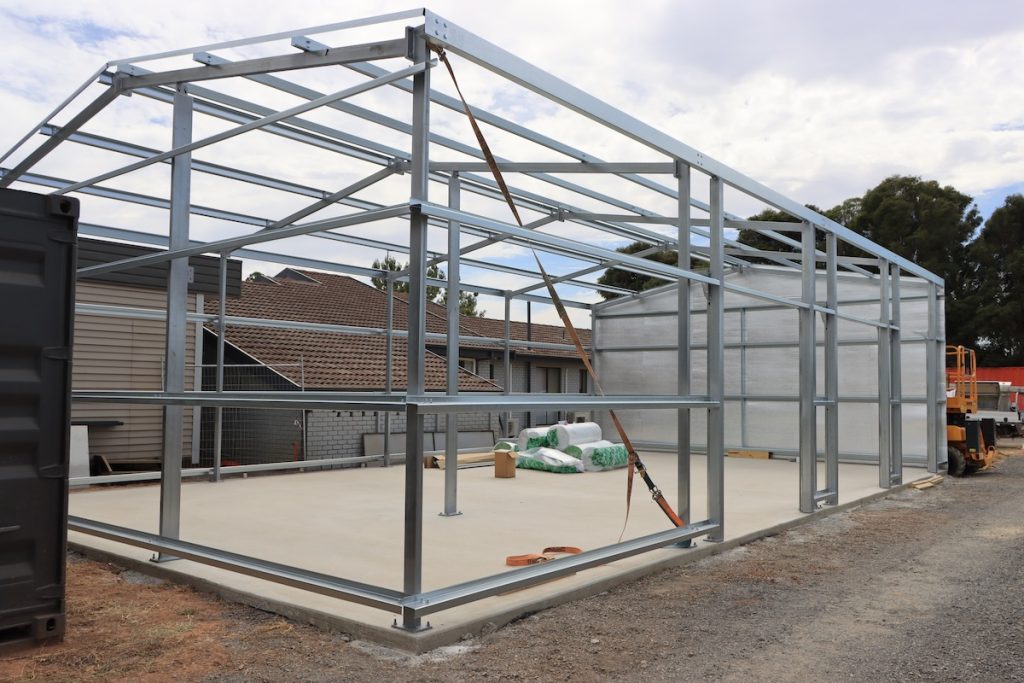
One of the most common questions we receive from clients is whether they should pour the concrete slab before or after constructing their new shed. In most cases, the slab is poured first, as it provides a strong, level foundation for the shed. However, there are instances when pouring the slab afterward may be beneficial, particularly for open-sided hay or machinery sheds. Let’s explore the reasons behind both approaches to help you make the best decision for your shed installation.
Pouring the Slab Before Shed Installation
In most cases, pouring the slab first is the most practical and cost effective approach. Here’s why:
- Better accessibility: With no shed in place, it is easier for concrete trucks and workers to access the site, reducing the need for specialised equipment such as a concrete pump.
- Stronger and level foundation: Pouring the slab beforehand ensures the foundation is level, properly set, and capable of supporting the shed’s weight.
- Faster and more efficient construction: A pre-poured slab allows for easier assembly of the shed, as all components can be installed directly onto a prepared surface.
- Avoids later modifications: By pouring the slab first, you eliminate the risk of needing adjustments to the shed’s structure to accommodate an uneven foundation.
Pouring the Slab After Shed Installation
Although less common, there are cases when pouring the slab after the shed is constructed might be, such as for open-sided structures. Here are some potential advantages:
- Sealing against vermin and water: Pouring the slab after construction can help seal any gaps around the edges, reducing the risk of rodents and water entering the shed.
- Reduced Risk of slab damage: If heavy machinery or equipment will be used during the shed’s construction, pouring the slab afterward can prevent premature damage from heavy loads.
- Flexibility for certain shed types: For large open-sided structures, pouring the slab last may provide more flexibility in design and function.
However, there are downsides to consider when pouring the slab after construction:
- Higher costs: Delaying the slab pour may require additional work, such as ensuring proper alignment and fitting within the shed frame.
- Limited access for concrete trucks: If the shed has enclosed sides or roller doors, it may be difficult to manoeuvre concrete trucks or pumps inside, potentially increasing costs and labour requirements.
Which Approach is Right for You?
For most shed installations, pouring the slab first is the recommended approach due to its efficiency, cost-effectiveness, and ease of construction. However, if you’re installing an open-sided shed or need enhanced protection against vermin and water, pouring the slab afterward may be a viable alternative.
Before making your decision, take time to consider the type of shed, its purpose, and any accessibility requirements. The expert team at All Sheds is here to guide you every step of the way, helping you choose the perfect shed to suit your needs and is built to last for years to come!
